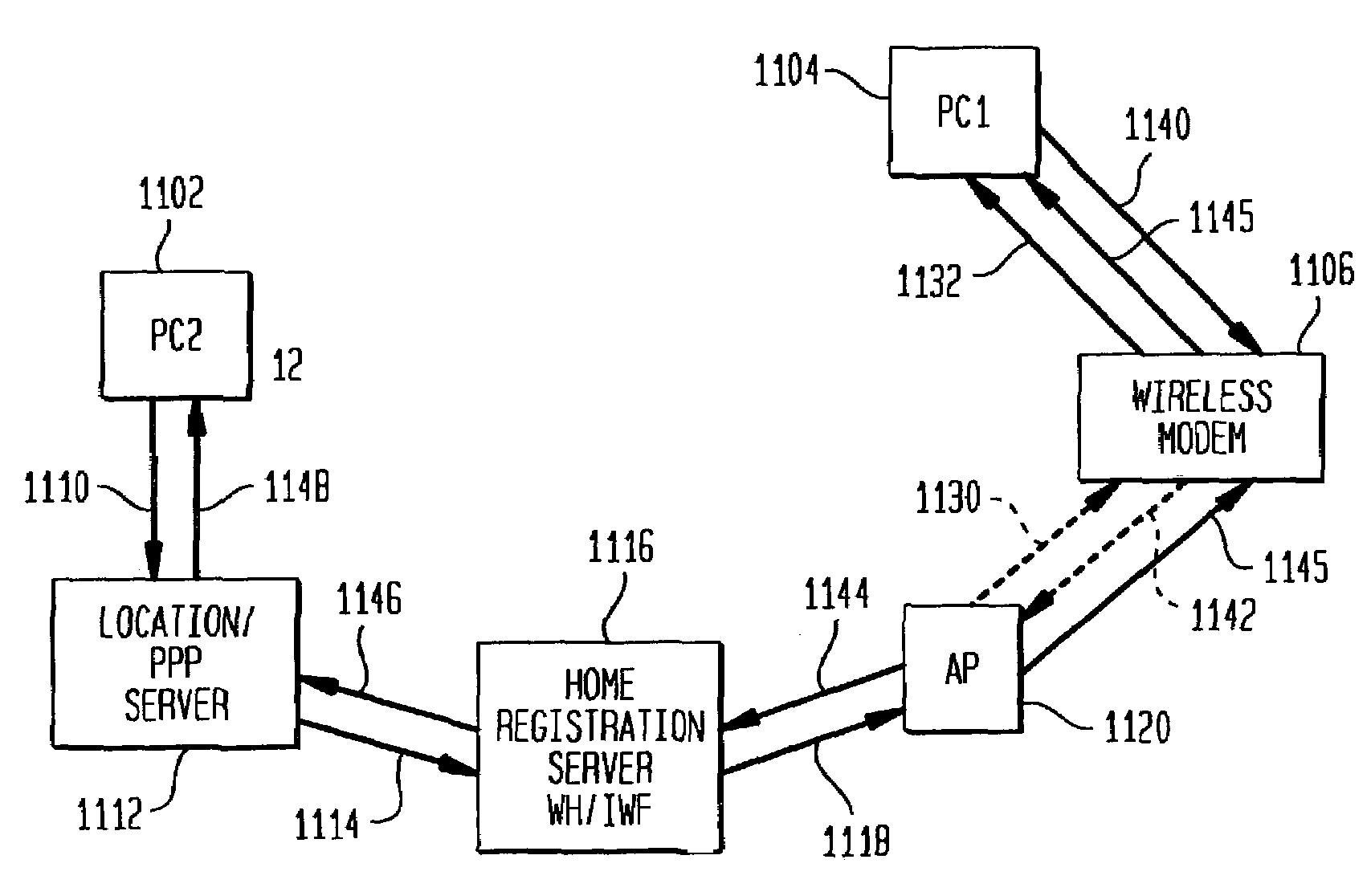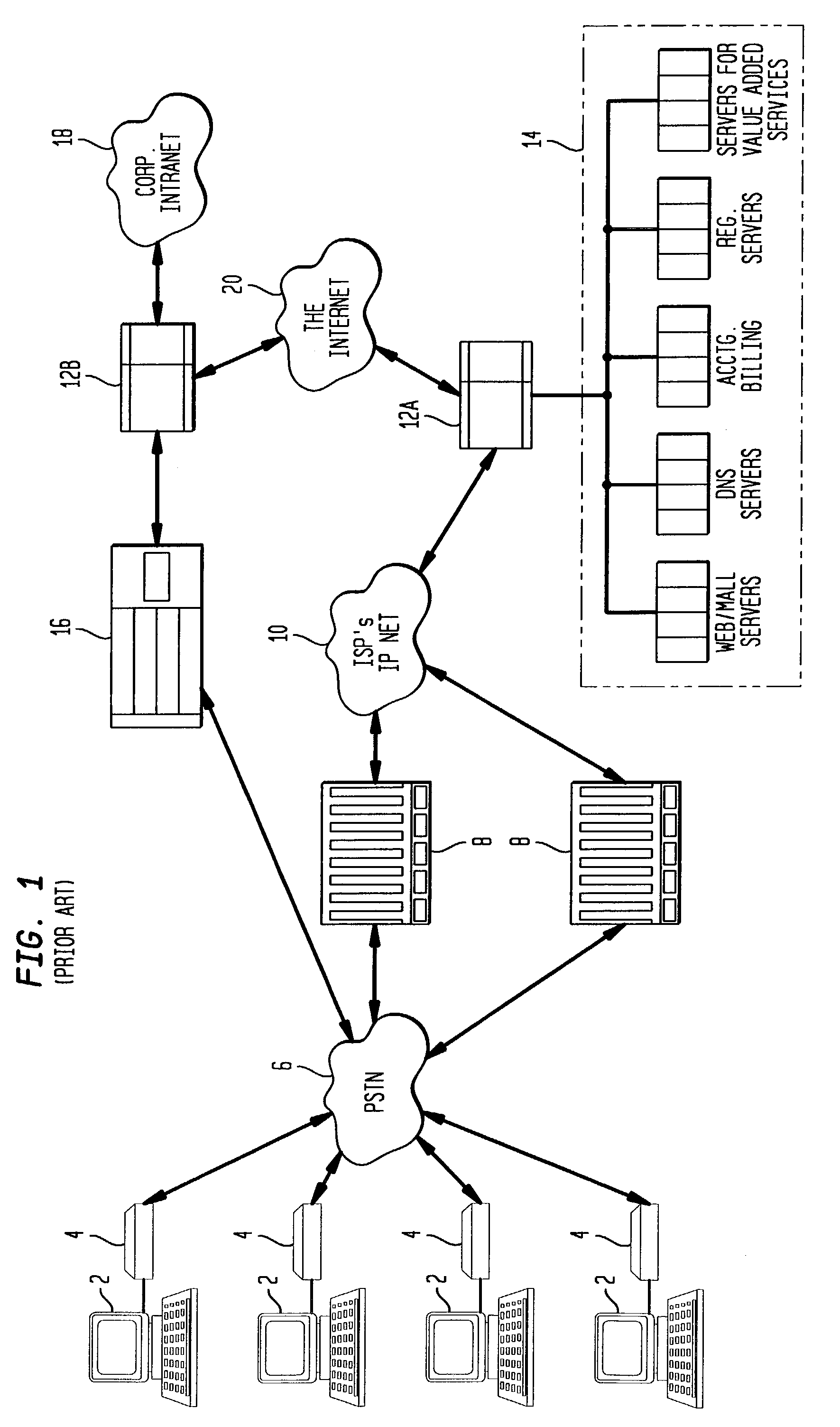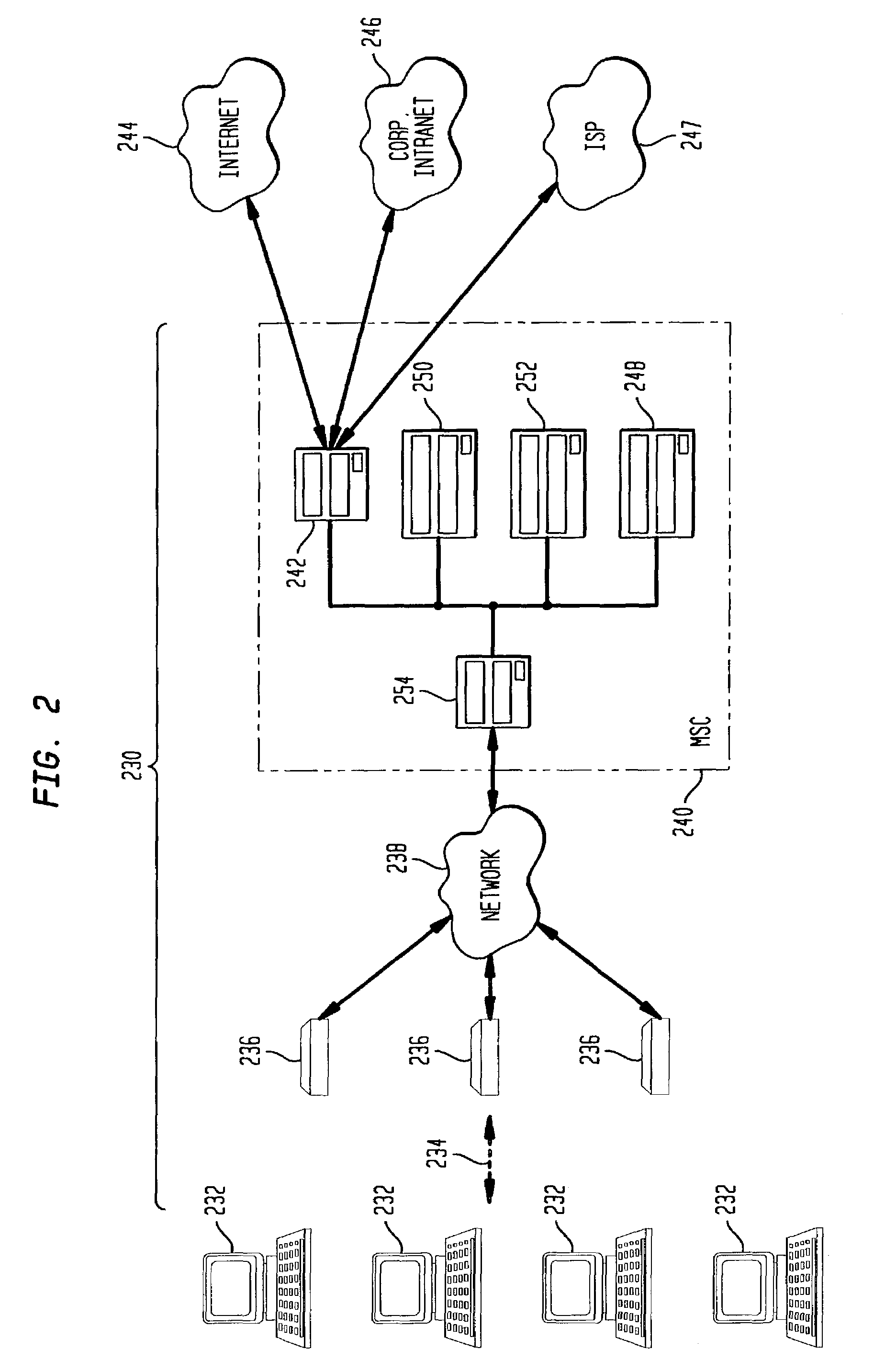Method for paging a device in a wireless network
a wireless network and wireless network technology, applied in the field of network access control, can solve the problems of unsuitable slotted aloha for efficient transmission of variable-length packets, unsatisfactory protocol, and lag in the achievement of wireless network bandwidth, so as to avoid all setup messaging and efficiently control the timing and method of making.
- Summary
- Abstract
- Description
- Claims
- Application Information
AI Technical Summary
Benefits of technology
Problems solved by technology
Method used
Image
Examples
Embodiment Construction
[0070]As previously discussed, it is an object of the present invention to provide a wireless packet-switched data network for end users that avoids the public switched telephone network and provides end users of the wireless network with remote roaming capability. These and other objects are achieved in a wireless data network that includes a home mobility switching center, a foreign mobility switching center, a base station (access point) and an end user. The home mobility switching center includes a home registration server and a home inter-working function. The foreign mobility switching center includes a serving registration server and a serving inter-working function. The base station includes a proxy registration agent. The end user modem includes a user registration agent. The user registration agent is coupled to the proxy registration agent, the proxy registration agent is coupled to the serving registration server, and the serving registration server is coupled to the hom...
PUM
 Login to View More
Login to View More Abstract
Description
Claims
Application Information
 Login to View More
Login to View More - R&D
- Intellectual Property
- Life Sciences
- Materials
- Tech Scout
- Unparalleled Data Quality
- Higher Quality Content
- 60% Fewer Hallucinations
Browse by: Latest US Patents, China's latest patents, Technical Efficacy Thesaurus, Application Domain, Technology Topic, Popular Technical Reports.
© 2025 PatSnap. All rights reserved.Legal|Privacy policy|Modern Slavery Act Transparency Statement|Sitemap|About US| Contact US: help@patsnap.com



